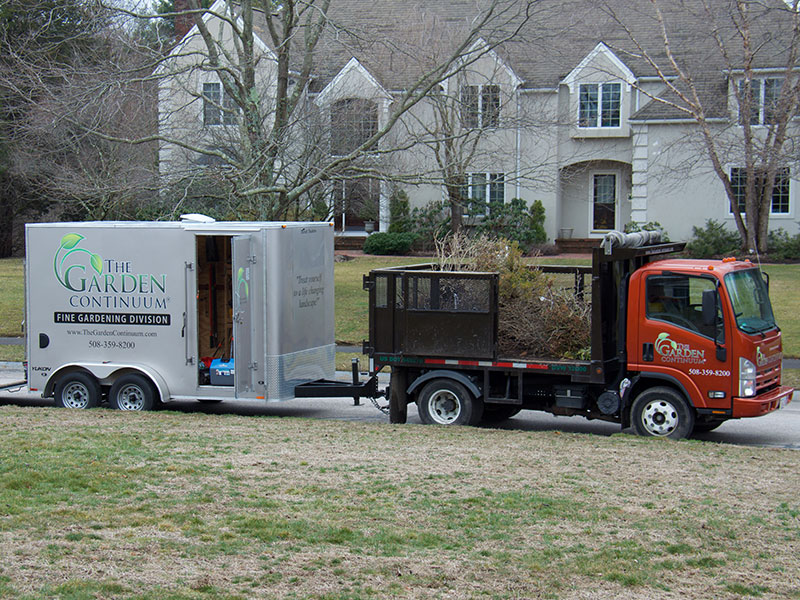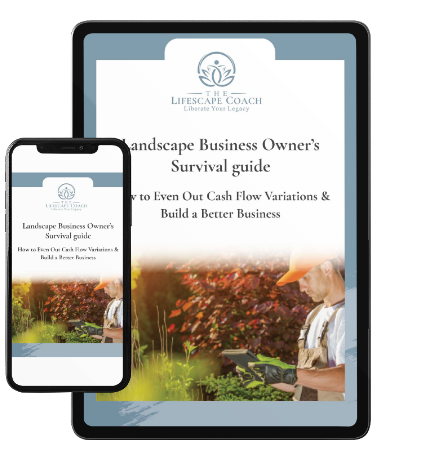Why is my landscape business growth stalling?
I spend a lot of time talking about marketing because that is a fundamental element of business growth that often gets overlooked in a “down-and-dirty” profession such as landscaping. We like to get our hands dirty, and get a great deal of satisfaction from that and so the “behind-the-scenes” stuff tends to get pushed to the back, often to the detriment of the business.
But even those of us who have had some success with marketing can be puzzled by business growth that has stalled. I mean, what the heck? You have leads coming in, so why has growth plateaued? It’s because it is not a marketing problem. It’s a problem with one or more of the three critical elements that drive new business:
- The Project Estimate
- The Final Proposal
- The Project Delivery (also called fulfillment)

Delivering on a promise.
Back to marketing for just a second. Effective marketing creates trust with the client, enabling them to say “yes” because they believe everything you’ve said. You have, in essence, made a promise – a promise to deliver something that will add beauty and value to their property and their lives. Now you have to successfully deliver on that promise in an effective and efficient way so that clients’ expectations are met – and hopefully, exceeded – and you make money.
That starts with the estimating process.
I’m not sure I’ve met any contractor that really enjoys working on estimates, but they’re the cornerstone for delivering a successful and profitable project. Estimates need to be accurate and complete to avoid potential issues for you and the client – there are no shortcuts here. The key is to allow yourself ample time to sit down and thoroughly hash out the job in front of you and the resources needed to get ‘er done!
The means listening carefully and wholly understanding the client’s problem that they want to be solved and the final outcome they desire. This is going to ensure that you create an accurate scope of work that will drive your estimate.
Don’t guess, know.
It’s crucial not to get lazy and produce a “guesstimate.” That’s the surest way to shoot yourself in the foot and lose both money and clients. Believe me, I speak from experience on that one!
Instead, roll up your sleeves and focus on capturing each element of the project – workers, equipment, materials, disposal, permits. Remember, not all costs are generated on-site while you build your project. There are the behind-the-scene elements such as your time organizing the project, purchasing materials, driving here and there an everywhere, and conducting meetings to manage the project. Even less fun to think about, but no less important, are those overhead items like fuel, leases, insurance, and taxes to name just a few of the biggies.
When you truly know what’s involved in successfully delivering a project, you’ll create more accurate estimates and better proposals that are fair to the client and fully cover your expenses and ensure a profit.
Speaking of proposals, that’s another area of concern. It’s vital to articulate your project plans for the client clearly. I have found the best way to do that is to ensure you cover these four points with every proposal you deliver:
- Remind the client where they are now and where they’re going to be once you are done. That means explicitly recapping with your client what you both agree is the current state of their landscape and what they are going to be left with after trusting you with their project.
- List out the scope-of-work. List the big-bucket items included in the project (for example, “patio, walkway, new shade trees and a lawn reno”), and then you can share any sub-list specifics that will help to ensure that you’ve captured everything and that the client clearly understands what’s involved.
- List out all materials. Listing the materials reveals what’s needed to complete the project and supports the scope-of-work (e.g., “if you want this done, here’s what it takes to do it”). Sharing this information helps you recover overage costs when there is a change in scope (“if you want a bigger that, it will require more of this”). You don’t have to list out the prices of each item just the quantities, volumes, sizes, varieties, etc. - to get them to “see & feel” the size of the project on paper.
- If at all possible, deliver your proposal in person. You’re now just one step away from getting a chunk of new business, so now’s not the time to blow it. Delivering your proposal in person enables you to control the outcome better. In person, you can read the client’s immediate response, answer questions, and help produce a positive result. If you must provide your proposal electronically, make sure you establish a meeting time to follow up and go over the proposal face-to-face or at a minimum, over the phone. It’s incredibly useful to have live contact to close the deal.
Now that you have a signed proposal and a deposit in hand, it’s time to set up the project delivery or job fulfillment plan and share that with the client.
One of the most common mistakes I see with small contracting businesses is that they aren’t looking ahead on the calendar to map out the stages of project delivery. It’s so important to develop a step by step project fulfillment plan so that you can be aware of anything that can trip up that plan. There are potential setbacks that always lurk in the weather, material delivery, subcontractor/employee availability, and inspections or permitting offices. Be clear with the client about all the factors that can delay a project so, they are aware you are working to keep on track, but some things are just out of your control.
Developing contingencies in your plan is vital. If you are planning for a subcontractor to be there on Tuesday and he’s unable to show up, what’s your alternate move? It’s similar to playing chess – you need to be thinking several steps ahead so you can avoid being blocked in and having your project get stuck. When a delay occurs, what other parts of the project can you be doing instead to keep moving forward? You can improve your odds by staging your materials ahead of time -- either on the job site or at your location -- to help your workflow. You can doubly improve your odds by setting firm dates and deposits with your subs well in advance.
By ensuring that each project is able to move forward smoothly and successfully, you are improving your ability to satisfy clients, and that’s the ultimate goal. Because a happy client is a loyal client and a client who will recommend you to others.
Successful business development requires a commitment
Developing new business is not a one-shot deal. It’s important to continue to work on these three tools -- estimates, proposals, and fulfillment -- that will maintain a positive flow for the work you promise to your clients while also ensuring that your company is growing and profitable.
 As you grow, the rate and frequency of your use of these three tools will increase, and that may cause you to stumble. Another reality that I’ve experienced more than once as I’ve grown The Garden Continuum!
As you grow, the rate and frequency of your use of these three tools will increase, and that may cause you to stumble. Another reality that I’ve experienced more than once as I’ve grown The Garden Continuum!
Remember, there are no shortcuts. The question to ask yourself is, “do I have systems in place to help me with estimating, proposing, and fulfilling?” The second question to ask is, “am I the only one who can do these things?”
If the answer to that second question is “yes” it’s likely because the answer to the first questions was “no.” If you have no systems or additional people to assist with these activities, then you have an impediment to growth because your time is finite.
The solution is to build good systems for each of the three tools we just discussed and teach those systems to key people within your company so you can scale your operation. In the next three posts, we’ll do a deeper dive into each of these three elements: estimating, proposals, and job fulfillment.
Landscape Business Owners Survival Guide



